KID REPORTERS’ NOTEBOOK
Here Come the Birds
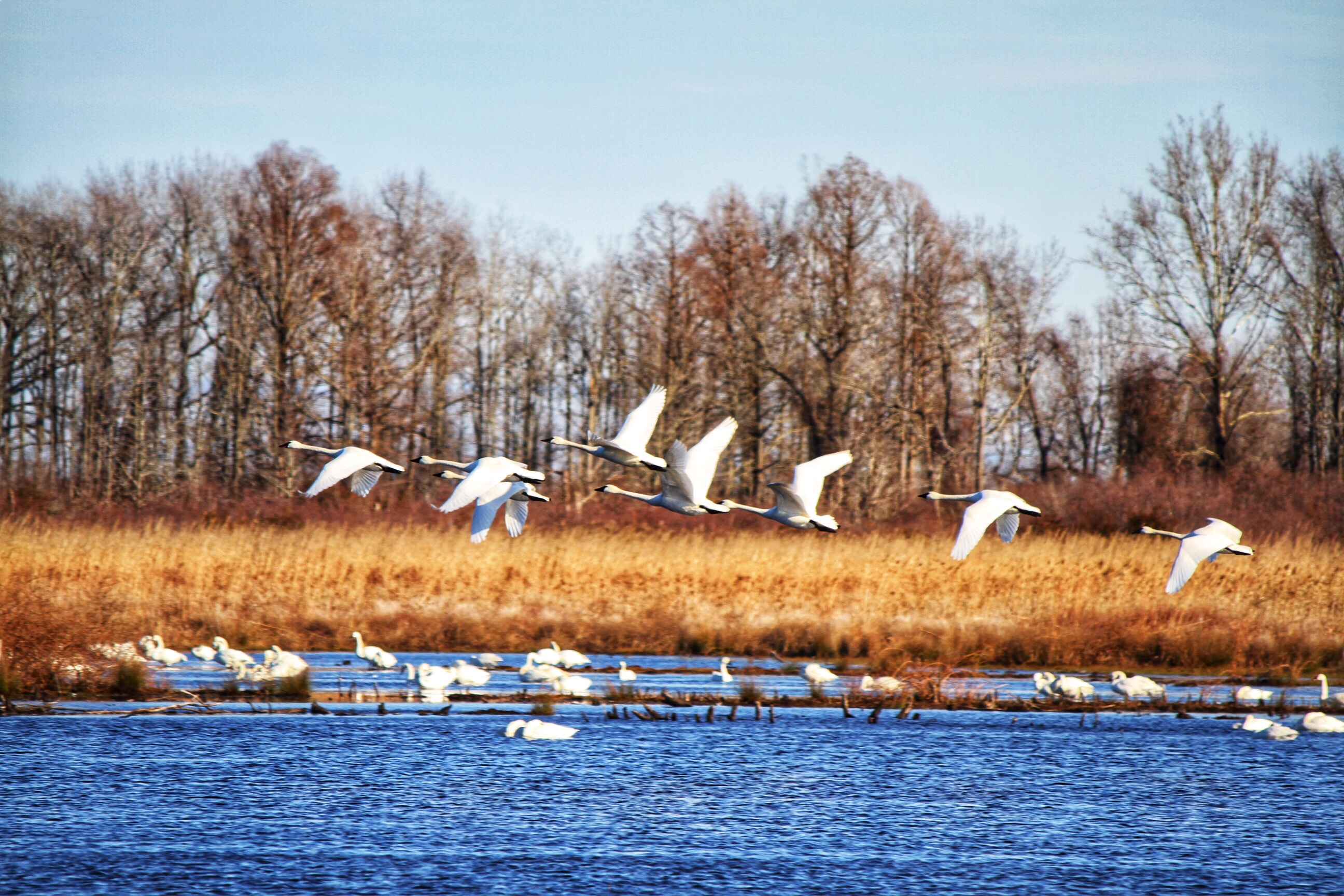
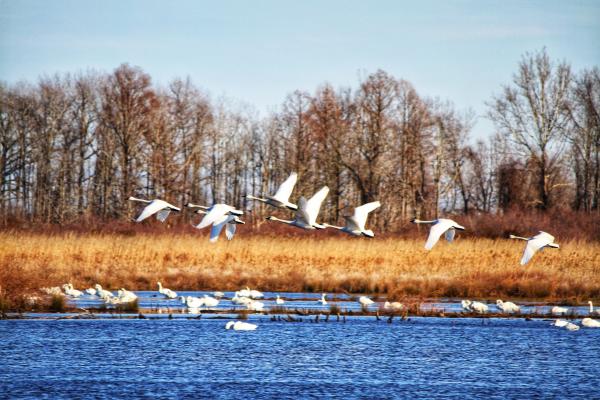
Tundra swans take flight at Pocosin Lakes National Wildlife Refuge in Columbia, North Carolina.
Have you ever seen thousands of birds gather together? Each winter, tundra swans and snow geese in North America fly south, sharing resting sites along the way. Staying from October through the end of March, they sleep in enormous wheat fields reserved especially for their migrations.
Humans help bird migrations by studying and protecting the birds, and making sure that there are enough safe places for them. That includes persuading people to help, donate, and care about the birds.
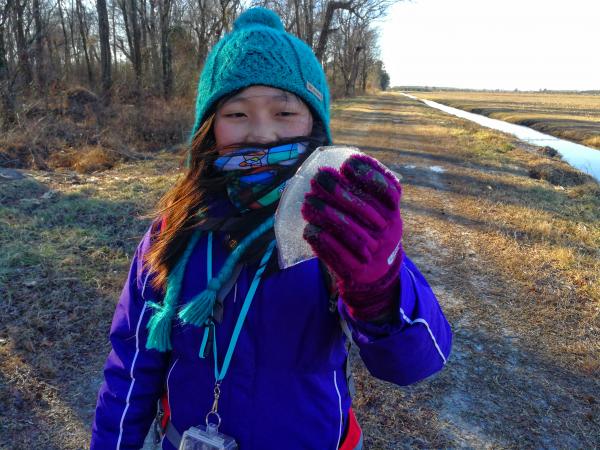
In winter, thick slabs of ice like the piece Teresa is holding, can be found in the North Carolina refuge, as well as bear prints and animal poop.
THE CYCLE OF LIFE
Each winter at Pocosin Lakes National Wildlife Refuge in Columbia, North Carolina, tundra swans and snow geese gather at one of the many stopover sites. The refuge is the largest stopover site along the East Coast of the United States, with anywhere from 65,000 to 75,000 birds wintering there.
After a recent visit to the refuge, I spoke with Amanda D. Rodewald, the Garvin Professor of Ornithology at Cornell University and director of Conservation Science at the Cornell Lab of Ornithology.
“During the winter, most birds are trying to survive and gain weight.” Rodewald explained. “If they can’t find a quality location to spend the winter, they may not gain weight and may leave the wintering area late. If that happens, then they’ll be late arriving back at their breeding areas. That means they may not be able to establish a territory that they can defend from other birds, find a mate, and raise their young.”
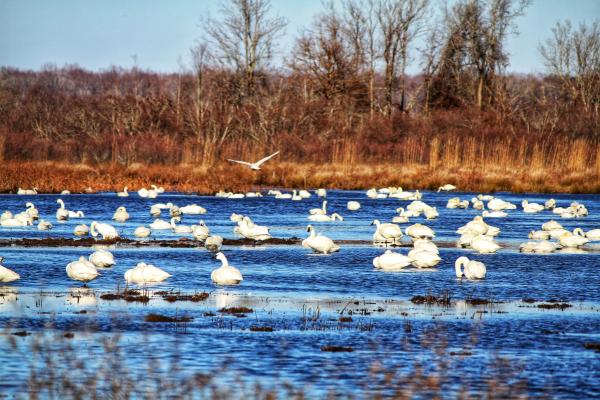
Tundra swans rest on a lake at the wildlife refuge in North Carolina.
TRAVELING IN FLOCKS
Birds migrate in flocks, similar to how you travel to faraway places with your family. “Flocks can be helpful for birds to detect predators,” Rodewald said. “More eyes are looking, and more ears are listening. This also helps with finding food.”
Bird migrations greatly affect our ecosystems, said Jordan Rutter, the director of public relations at the American Bird Conservancy.
“The literal number of mouths to feed changes depending upon the season and time of year,” Rutter explained. “And we can’t forget that with all of these extra animals there is additional waste and the need to find places for them to live, nest, and find shelter.”
According to Rutter, recent studies have found that migrating birds transmit diseases. They also transmit “insects such as ticks and lice and seeds.”
On winter afternoons at the Pocosin Lakes refuge, the spectacle begins at around 4 o’clock. Snow geese and tundra swans fly in flocks to their resting places. They fly wing-to-wing, forming a huge, coordinated cloud in a counter-clockwise direction. During my visit, they flew up in a circle, then flew down several times.
With Earth Day approaching on April 22, the birds remind us of the words of the great marine biologist and conservationist Rachel Carson: “In nature, nothing exists alone.”
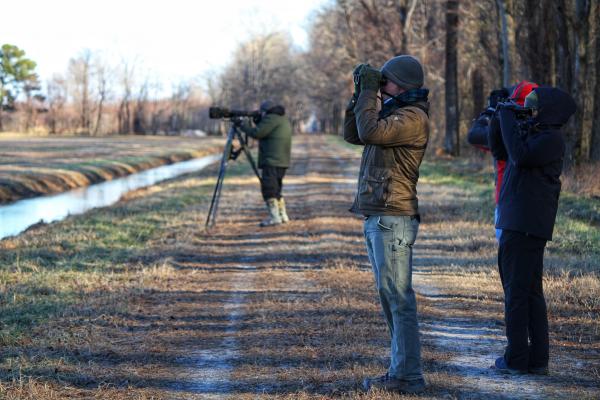
Thousands of sightseers visit the North Carolina refuge each winter. Many try to capture nature at its best on their cellphones and cameras.
